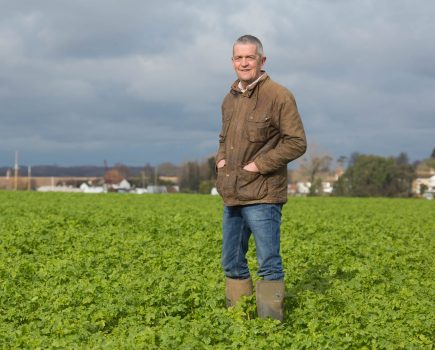
Have you driven past a crop of barley as it’s coming into full ear, looking great, then a week later you drive past the same field and it looks as if someone has sprayed it with glyphosate? That’s how quickly the devastating effects of ramularia can take place.
Ramularia is fast becoming a global problem in winter and spring barley production, and is now present in 14 countries. It’s quite easy to confuse the disease for net blotch and other abiotic leaf effects, although the 5R rule helps (see picture).
Having been to two ramularia research meetings in the last six months, agronomists and researchers from as far afield as New Zealand and Uruguay are saying the same thing: there’s no genetic resistance and there’s broad-based resistance to strobilurins, triazoles and SDHIs. Ramularia is classed as a high-risk pathogen to resistance, equal to septoria, and investigations have shown that many different mutations to the key fungicides all co-exist.
The only fungicide that offers any control is chlorothalonil, soon to be lost throughout Europe due to regulation. This is a shame as I’ve seen several fungicide trials on winter barley over the past few years, and where ramularia was present, yield responses from the addition of CTL were on average over 1t/ha. There wasn’t a similar response from the inclusion of other multisite fungicides available such as folpet or mancozeb.
So what exactly makes it a unique and difficult disease to control?
The fungus is predominantly seed-borne, and it grows systemically and asymptomatically in the plant. It’s undetectable until the plant changes from vegetative to reproductive growth, and some “stress event” takes place. Stress triggers the production of toxins called rubellins, which cause the chlorosis and necrotic spotting on the leaves. Flowering can be enough to trigger this response, but there’s also evidence that waterlogging and possibly late season PGRs can also act as a trigger.
More knowledge is needed as to what physiological changes occur in the plant that induce the changes in the behaviour of the fungus, i.e. the point it changes from endophytic to necrotrophic.
It’s also thought that the expression of rubellin and the leaf symptoms are dependent on light intensity. Laboratory trials have shown that light intensity prior to inoculation produces greater rubellin production than plants grown under low light conditions. Could chlorothalonil be acting like a sunscreen and preventing some UV light penetration into the leaf tissues, thereby minimising the stimulation of rubellin formation? Leaf wetness around flowering is also a key influencer in the amount of disease expression.
Logically, one would have thought that a seed test could determine the risk of the disease, with it being a seed-borne disease. Unfortunately, research to date has not established a good correlation between the quantity of ramularia DNA in the seed and how much eventually appears in the leaf of an infected plant.
Wheat, oats, and rye can all get ramularia, but the whole rubellin mechanism is supressed in those crops, resulting in no leaf symptoms. This maybe an important clue to enable scientists to understand how the disease can be supressed and whether a microbiological mechanism can be introduced genetically into barley either through gene editing or genetic modification.
There are no varieties with resistance to ramularia within the UK, nor globally. AHDB withdrew their resistance ratings as they were proving to be unreliable between years, and within a season between trial sites. One fact that does seem to receive unanimous endorsement from the scientists, is that varieties with the mildew resistance gene (mlo) are more susceptible to the pathogen, although the reasons are not well understood. There also seems to be a resistance gene that works at the seedling stage, but plants with this gene are more susceptible to later infections.
Are there other means of controlling the disease through an integrated management approach? There’s a definite need for investigations of drilling date, rotation, cultivation methods, bio-pesticide use and resistance elicitors such as laminarin. Seed treatments using microwaves, steam and hot water have been tested with varying degrees of success.
All in all, this is a disease with some real concerns in the absence of the only fungicide that controls it. The only positive note is that there are many of the best research scientists and plant breeders in the world working together on developing solutions that will hopefully be with us in the not too distant future.
Formerly technical director at Velcourt, Keith Norman is an independent consultant who avidly pursues innovation in agriculture. @KeithNorman_Ag




